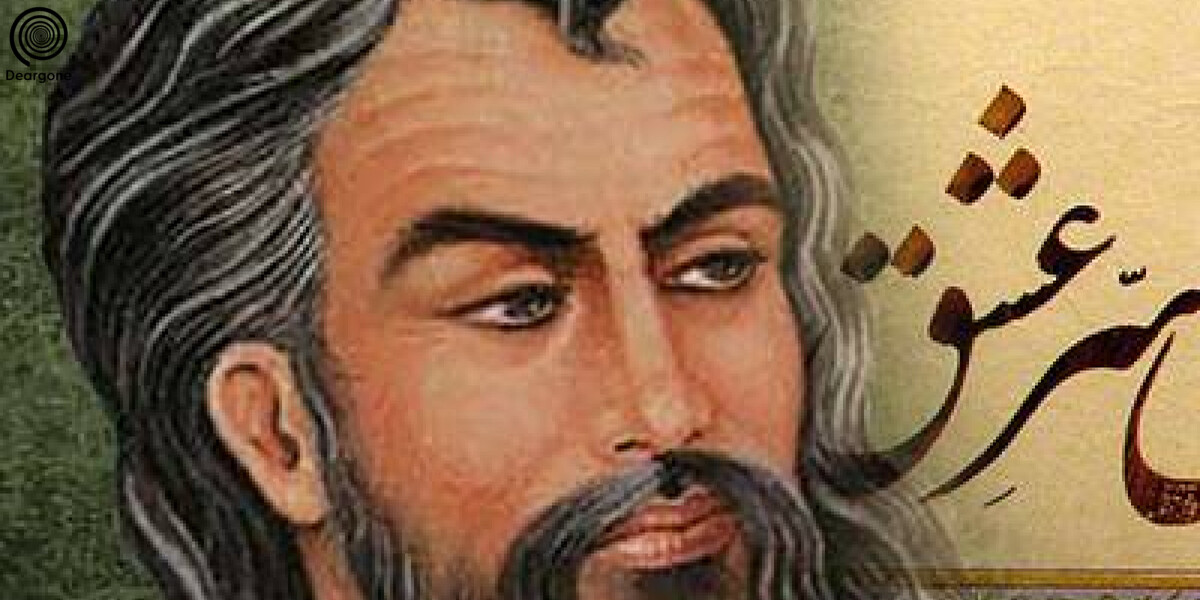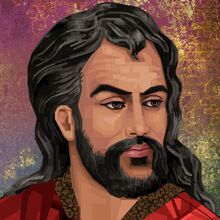Khwaja Shamsuddin Mohammad bin Bahauddin Mohammad Hafez Shirazi
Khwaja Shamsuddin Mohammad bin Bahauddin Mohammad Hafez Shirazi, nicknamed Hafez, is one of the most popular Persian poets of the 8th century AH, whose poems have many fans not only in Iran, but all over the world after centuries. Hafez was a great ghazal writer and one of the greats of Persian poetry and literature, and most of his poems are ghazals. The subject of this great poet's poems is very special and diverse, that's why his poems are used in traditional Iranian music, visual arts and calligraphy.
Hafez's real name is Khwaja Shamsuddin Muhammad bin Bahauddin Muhammad Hafez Shirazi, and his famous nicknames are Lasan al-Ghaib, Tarjan al-Asrar, Lasan al-Arfa and Nazim al-Awlia. Hafez was interested in topics such as Persian literature, poetry, philosophy and mysticism, so he pursued his career in this direction. Hafez's poetry has three romantic, mystic and praise atmospheres, each of which is special and audible in its own place.
The poems of this great Persian poet of the 8th century were translated into European languages in the 18th and 19th centuries. It is interesting to know that Goethe; The great scientist and the famous German poet and orator compiled his Oriental Diwan in the name of Hafez and inspired by his thoughts, which is very remarkable. The speech of this great poet is in the style of Khajovi Kermani, and his main fame depends on his very beautiful sonnets.
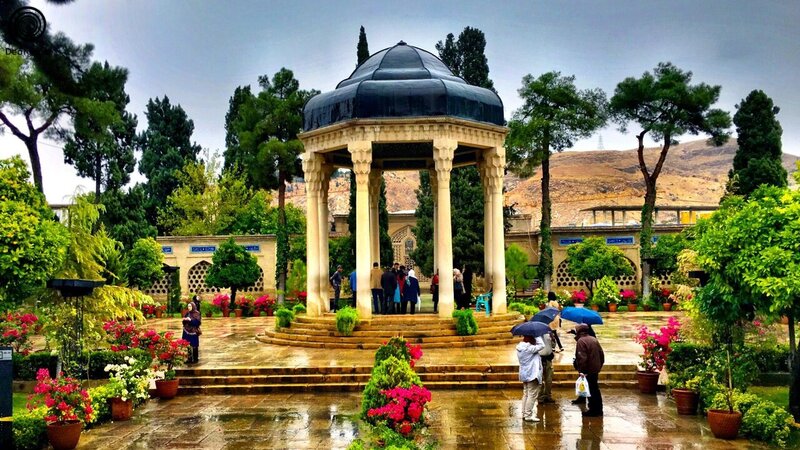
Where is Hafez's tomb?
The tomb of Hafez or Hafeziyah is located in the central part of Shiraz city in Fars province. Hafiziyah is located in the south of Koran Gate, in the northern edge of Shiraz and at the beginning of Golestan Street. Hafez died in Shiraz in 792 AH.
Hafiziyah was restored many times by the order of the Timurid, Safavid, Afshar and Zand rulers; But finally, in 1314 AH, the construction of a new building was arranged by the order of the Ministry of Education. In this plan, Hafiziyah was divided into two parts, north and south, like its old plan, and its full implementation lasted until 1317 AH.
Hafez Mausoleum can be considered one of the most popular and famous sights in Shiraz, which has a unique architecture. The peace of Hafeziyah is very heartwarming and it is considered the best place for lovers to meet. This space will give you a pure and unique feeling that you will not experience anywhere else. Couples in love walk hand in hand in this space and get fortunes. The whispering of Hafez's poems can be heard from different parts of the memory and the smell of orange spring will make you dizzy. Hafiziyah is a place full of good vibes in the romantic city of Shiraz.
The tombstone of Hafez is the same tombstone installed in the period of Karim Khan Zand. It is interesting to know that the area around Hafeziyah was a public cemetery in the past years and many nobles and members of noble families of Shirazi were buried in this place. In this part of Hafeziyah, two large rectangular ponds and several gardens with cypress and orange trees can be seen, which is very spectacular and beautiful. The tea room, library, and memory room are just some of the parts that exist in this part of the memory building. In the following, we will see the poem engraved on Hafez's tombstone:
The glad tidings of Vasal, let us rise up from both worlds
Address of Hafez Tomb: Hafez Tomb, Hafezeh Square, Shiraz (view on the map)
Visiting hours: spring and summer from 8:00 to 22:00 and autumn and winter from 08:00 to 19:00
Entrance fee: 25000 Tomans

Biography of Hafez
Hafez was a 8th century Persian poet who was born in 727 AH in the city of Shiraz. His father's name was Bahauddin Muhammad, who died when Hafez was a child. As a teenager, Hafez was a baker's apprentice and lived a difficult life with his mother. It is said that he used to go to a school near the bakery in his spare time and learned to read and write there. He participated in the lectures of scholars and elders of his time and also spent time doing hard and exhausting work to earn money. Hafez's house was in Shiadan neighborhood of Shiraz.
This great poet mastered all religious and literary sciences in his youth, and in his twenties he became one of the famous scholars of his country. It is interesting to know that he had completely memorized the Quran and that is why they chose the surname Hafez for him. Shamsuddin Muhammad bin Bahauddin Muhammad Hafiz Shirazi attended the classes of the teachers of that time such as Qawamuddin Abdullah, Maulana Bahauddin Abdul Samad Bahrabadi, Mir Seyed Sharif Allameh Gorgani, Maulana Shamsuddin Abdullah and Qazi Azduddin Aiji for about forty years, and because of this, most The knowledge of his time was dominant.
During the reign of Shah Sheikh Abu Ishaq, Hafez made his way to the court and chose a divan job for himself. In addition to Shah Abu Ishaq, he was present at the court of other kings such as Shah Sheikh Mubarizuddin, Shah Shoja, Shah Mansoor and Shah Yahya. Hafez made a living through diwani and poetry was not his main occupation. It is interesting to know that the biggest sin according to Hafez was hypocrisy and deceiving people. During his life, Hafez wrote very beautiful and meaningful poems, especially lyrical poems, which even now, after centuries, smell fresh and are relaxing to read. Divan of Hafez's poems includes ghazals, odes, masnavis, fragments and quatrains.
In his youth, Hafez fell in love with a girl named Tokhi Nabat; Of course, some are of the opinion that the name of Hafez's wife was Nasreen and he gave her this name because of the sweet language of his lover. In order to reach his lover, he spent 40 days and nights in the tomb of Babako and kept vigil and prayed. Then, he married Branch Nabat and the result of this marriage was a son. Hafez was married only once and remained single after his wife's death. For this reason, many mystics and lovers search for holy and true love in Hafez. The son of this great poet also died in his youth on the way to India with his father.
In Iran's official calendar, 20 Mehr is Hafez's commemoration day, and every year on this day, Hafez's commemoration ceremony is held at his tomb in Shiraz with the presence of researchers from all over the world.
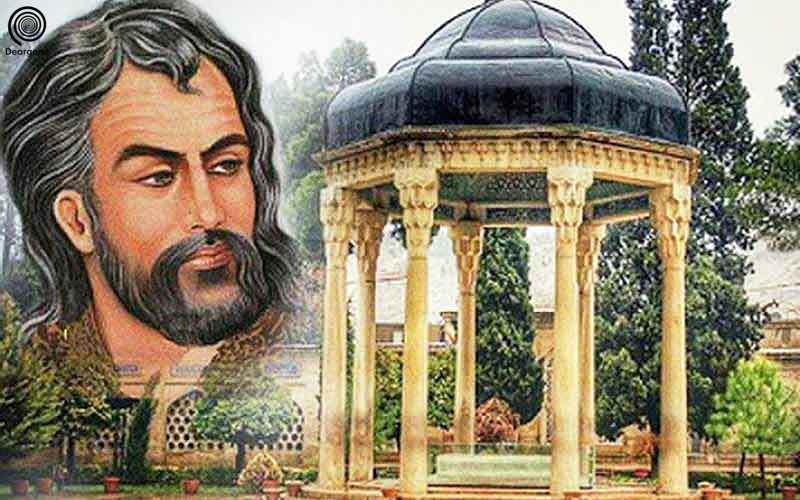
Works of Hafez
Diwan Hafez contains 500 sonnets, 42 quatrains and several odes, which he wrote in 50 years of his life. That is, on average, he wrote only 10 sonnets every year; Because he used to compose his poems in special moments and focused on creating pure works worthy of the status of a lover. This point is very remarkable and thought-provoking, and for this reason, Divan has turned his book into a special and readable book. Diwan Hafez has been published more than 400 times in Persian and other languages of the world. Hafez has also earned the title of the most skilled lyricist in the Persian language, and his single verses are very brilliant and spectacular.
Perhaps interpretation or the power of interpretation can be considered one of the most important characteristics of Hafez's poems; Because everyone who opens Hafez's divan and sings a poem from it, has a different perception of it according to his mental condition; In such a way that Hafez wrote that poem only for him at that moment. In Hafez's poems, the artistic proportions are observed in a delicate and precise way, and he has used ambiguity and uncertainty appropriately. In some of Hafez's poems, satirical language is also used to express the unsaid with the help of satirical language.
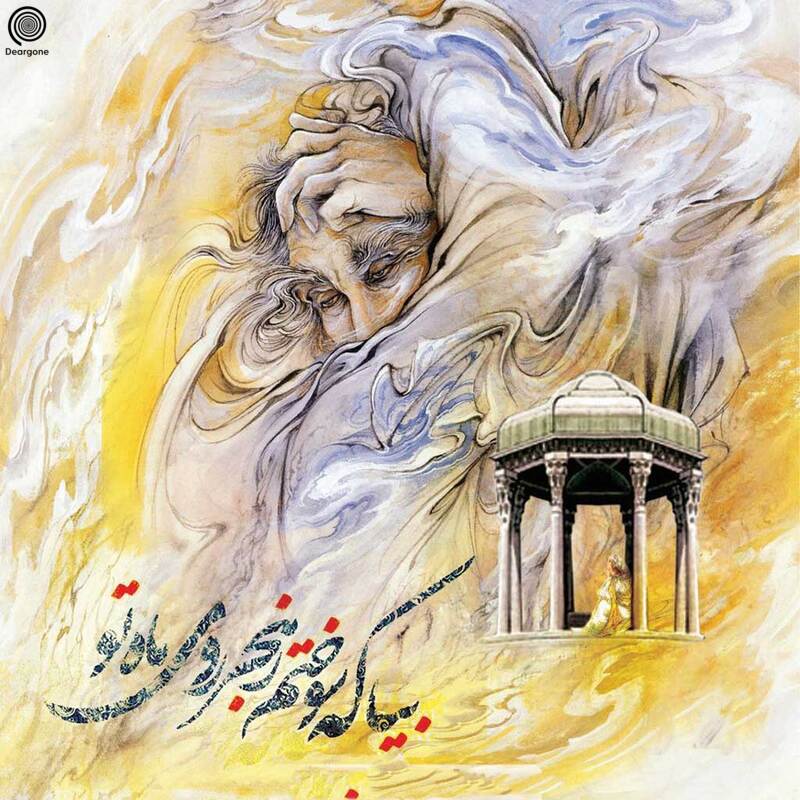
In the following, we will refer to some of Hafez's poems related to various topics:
Hafez's poem about God
I see God's light in the ruins of Moghan
It's amazing what kind of light I see from where
Show me, O King of Al-Hajj, that you are a traitor
You see a house and I see God's house
I want to take advantage of you
The thought is far away, I see a mistake
Burning heart, flowing tears, oh dawn, moaning of the night
I see all this in terms of your kindness
Every time I lived a role from you, the way of imagination
By saying what I see in this screen
No one has ever seen the musk of circumcision and nafe chin
What I see every morning from Bad Saba
Friends, do not criticize the game
I see him as your lover
Quranic references in Hafez's poetry
I have not seen anything better than Hafez's poetry
To the Quran that you have inside your chest
Waking up early and seeking health like Hafez
Whatever I did, I did it from the Koran government
Let your love reach your cry to San Hafez
Recite the Qur'an with four narrations
Hafez's poem about love
Did you see, O heart, what the sadness of love did again?
What did he do when he became a lover and a loyal friend?
Ah, what a game it evoked from that magic narcissus
Oh, what did that drunkard do to sober people
My tears became the color of dawn because of the unkindness of my friend
Horoscope without compassion, see what he did in this work
May the light shine from Lily's house, Sahar
And what did he do with Harman Majnoon Del Afgar
Saqiya Jam Mim Deh is the author of the unseen
It is not known what he did in the veil of secrets
The one that became prominent is this enamel circle
No one knew what he did during his tour
The thought of love ignited the fire of sadness in Hafez's heart and burned
See what he did to his old friend
See this Article : Where is hafez tomb hafezieh?
and this article : Hafez in the inflammatory period of iran
and this article : Hafez's influence in Iran
and this article : The meaning of May in Hafez's poems
